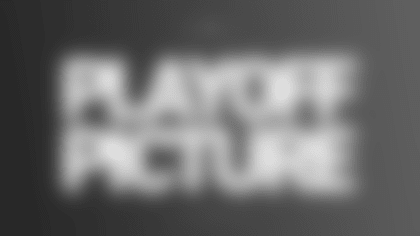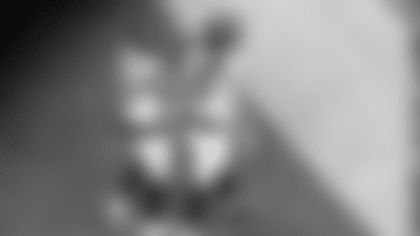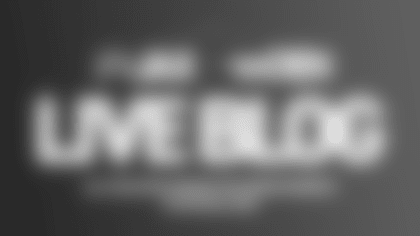The office walls were bare, and behind Mark Lamping sat a small table with a coffee machine.
As of mid-Monday afternoon, the surroundings in Mark Lamping's new office were far from plush, but trappings weren't what the first day on the job were about for the Jaguars' new president.
"I'm trying to figure out who's who and who does what," he said.
Lamping, hired two weeks ago by Jaguars Owner Shad Khan as the team's first president in more than a decade, officially started work Monday at EverBank Field. He met with Jaguars employees in the morning, then talked with jaguars.com several minutes in the afternoon, and said the early days on the job will be what might be expected:
An acclimation process, a time for learning. And a time for listening.
"It's like anybody else when you start a new job," he said. "I'll spend a lot of time trying to figure out where we are and develop some relationships so we can be on the same page going forward."
Lamping, President and Chief Executive Officer of MetLife Stadium and home to the New York Jets and New York Giants since April 2008, spent 15 seasons before that as the president of the St. Louis Cardinals.
He will report directly to Khan, and is responsible for all non-football facets of the Jaguars.
He and his wife, Cheryl, have spent extensive time at Amelia Island, and while with Anheuser-Busch from 1981-1993, he traveled annually to Daytona Beach as part of his job responsibilities there.
"I love this part of the country," Lamping said. "I've always felt it was one of the most desirable places to live in the entire country. To be able to combine working with the NFL and working with a team that I truly believe has great things ahead, it's a great opportunity."
Lamping, who oversaw the Cardinals during a time the organization expanded its fan base on a regional level, said he very much sees the same opportunity with Jacksonville – and that he was impressed by Khan, who purchased the Jaguars in December and took over ownership early last month.
"I was impressed by Shad – not only his story, but his commitment and his expectation level," Lamping said.
Lamping took time Monday to share some early thoughts on his new position:
Question: Was there a moment when you were talking with Shad Khan when you realized, "This is what I want to do? This is the next step?"
Answer: I went back a couple of days after Shad had purchased the team and listened to his press conference, and listened to a follow-up interview. I was blown away by what his expectations are. He has very, very high goals. I've always wanted to be and have been fortunate to be in situations where ownership is not just committed, but also willing to provide the resources necessary – and all they ask for in return is accountability. I've always felt that's an easy tradeoff. If you get the resources and the ability to make decisions, you'll gladly accept accountability.
Q: You've discussed – and Shad has discussed – the need to expand the fan base regionally. Any thoughts on that at this early stage?
A: The most important thing is you're not expanding regionally at the expense of your core market. The core market has been, is and will always be Jacksonville. But to supplement the fan base and position the franchise for faster growth, you need to reach out. You make sure you're strong at home, then you venture out in other areas. You need to nurture the next generation of fans locally, but continue to expand. It's not something that can be done overnight. You can't send six people out to try to sell Jags tickets, call them back in two weeks and say, 'Hey, how'd you do?' That's not how it works. You need to have a plan that illustrates the commitment you're making to that community. It's a slow build. You have to make a legitimate commitment to that market. It's much easier to go in there and ask for an order after you've done that. It's that sort of foundation-building that's really important. Nothing anymore is an overnight fix. You need to have an idea of what you're trying to accomplish and stay committed to it. Sometimes, you make a commitment to this type of outreach and when you don't see it getting any results, it's one of the first things you stop doing when you're trying to control costs.
Q: You've talked about wanting to get back to working for a team – preferably in the NFL. You worked closely with both the Giants and Jets in New York. Why the pull to get back to a team?
A: If you're fortunate enough to work in sports, you have to make a lot of sacrifices. You work more than you think you're going to have to work, and you don't get paid what you think you're going to get paid, but one of the reasons we do it is because it's a fun environment to work in. Occasionally, you'll catch lightning and you'll win a championship. That's one of the most significant things that could ever happen in your professional life, is if you work for a sports team and you win a championship. I had a taste of that in 2006 with the Cardinals and observed how it worked with the Jets' success the last two years and the Giants going on their incredible run this year – even though you're closely affiliated with the teams, it's not the same thing as working for them. And while in sports you work way too many hours, your family can really share that with you.














